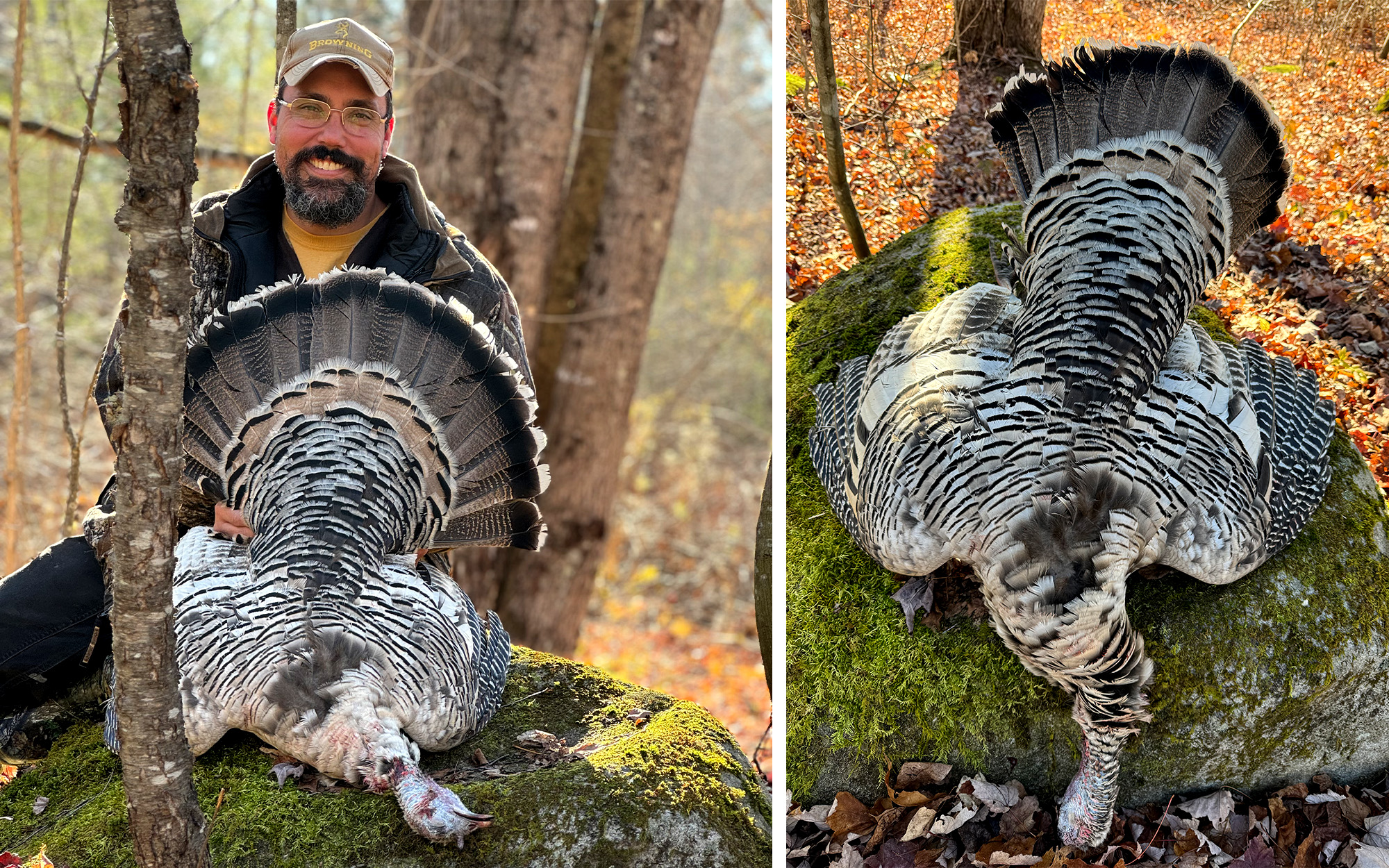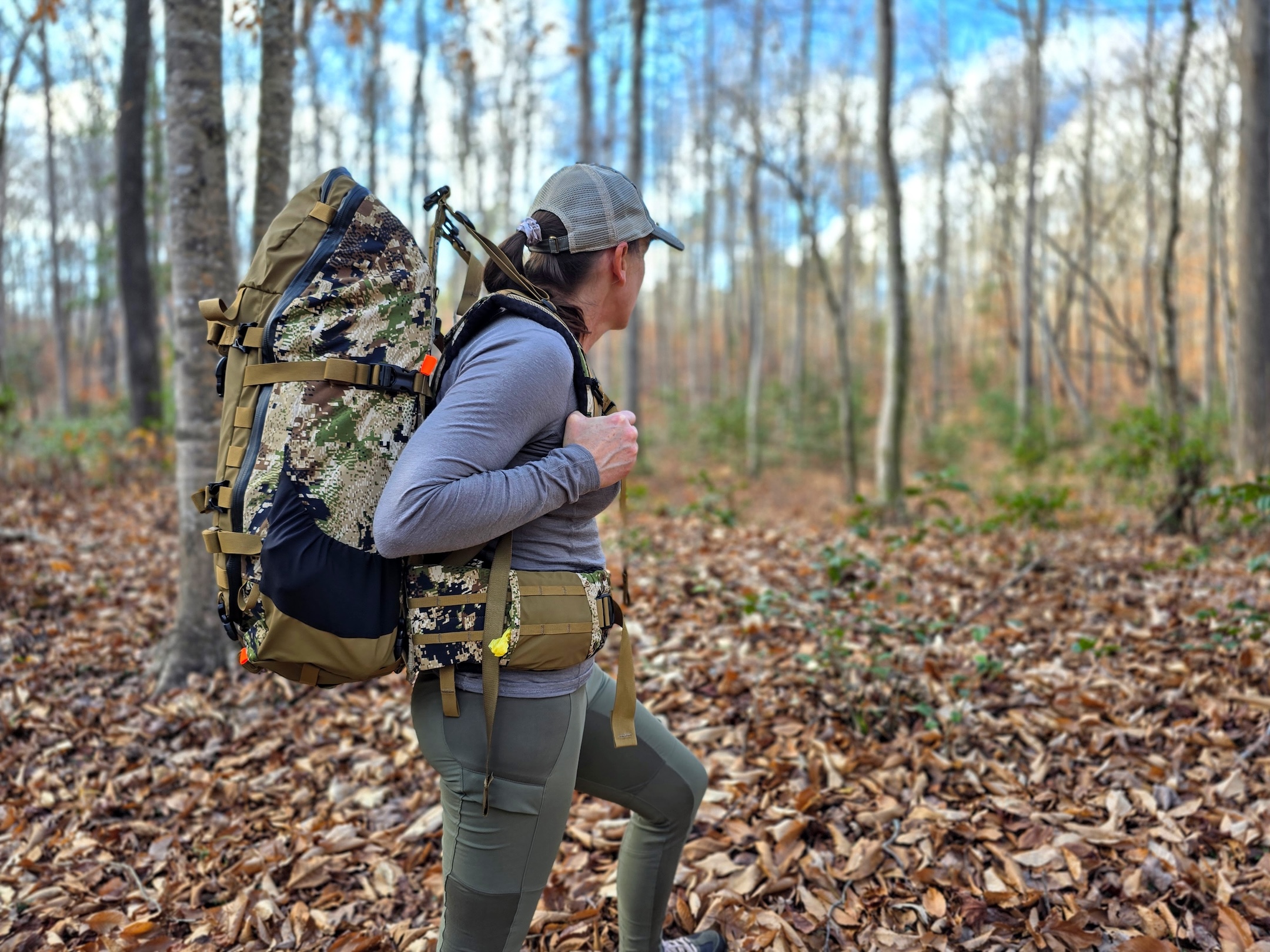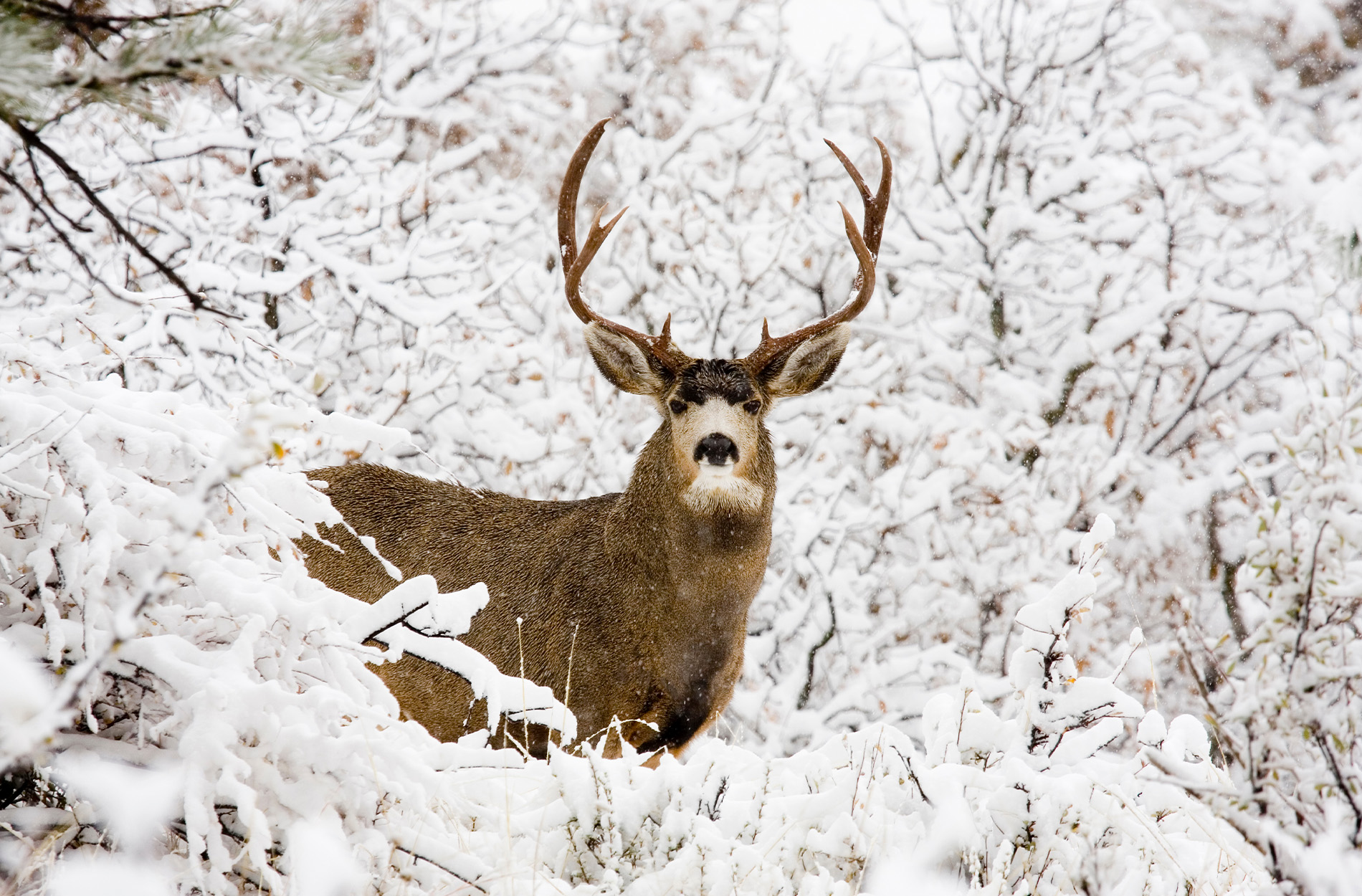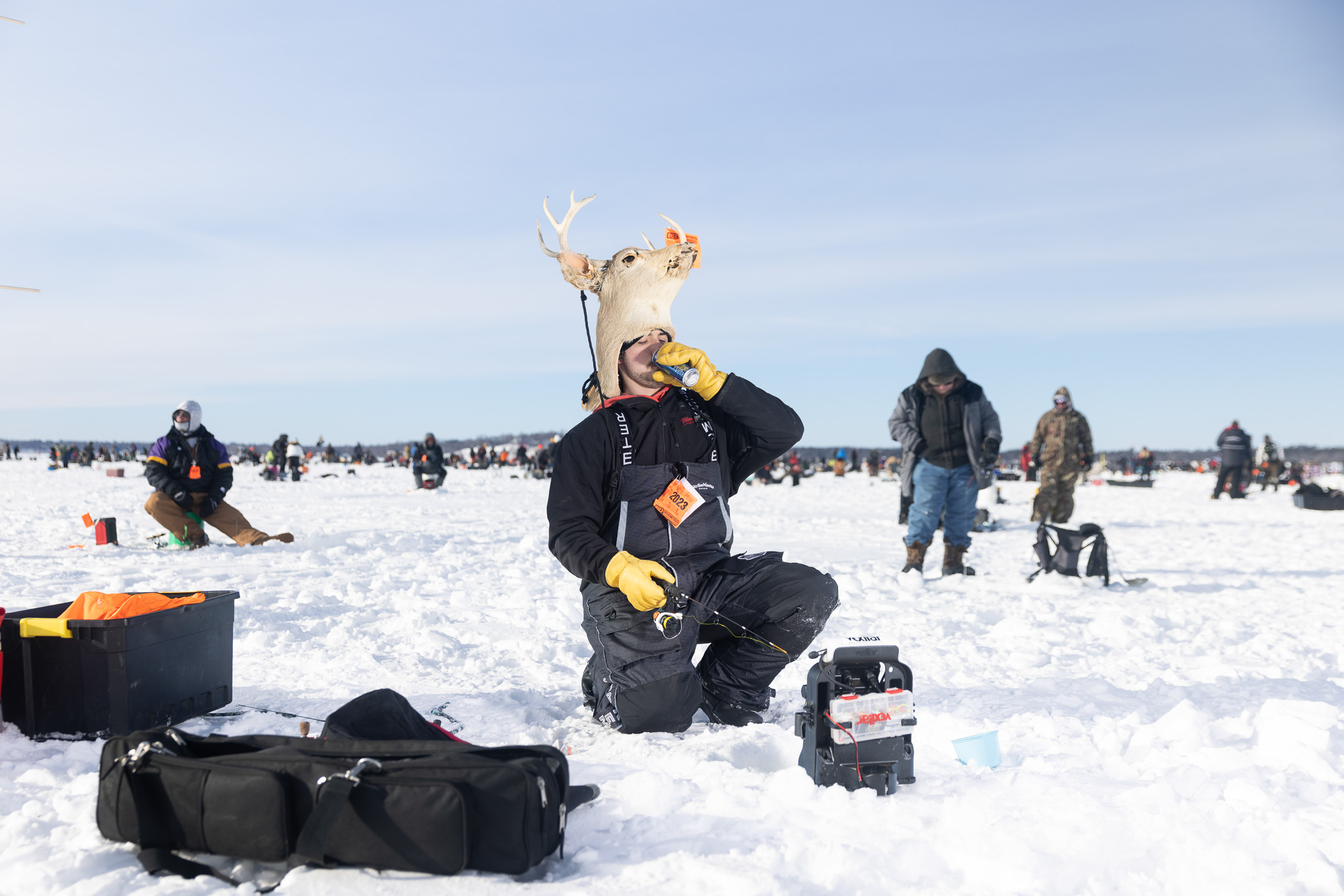Vermont Hunter Ends 4-Year Chase for Rare Smoke-Phase Turkey

Nick Smith knows Vermont turkeys. The Groton resident is the son of a taxidermist, and he’s been a devout turkey hunter all his life. Smith, a professional forester, also contracts regularly with the Vermont Fish and Wildlife Department to work on turkey habitat projects, and he’s on a first-name basis with the state’s upland game bird program manager. Because he spends so much time in the woods, working and scouting for birds sometimes goes hand in hand.
So when a smoke-phase hen showed up on a property that neighbored one of Smith’s clients in 2021, he noticed it immediately and started paying attention. He had permission to hunt his client’s property, but not the nearby land where the bird and the rest of the flock were holed up. The hen would disappear frequently, sometimes for months at a time, then reemerge outside of hunting season.
A few years passed like this. Smith would look and search for the smoke-phase hen, wondering if the bird was still alive, and he would always be relieved to discover it hadn’t been poached or eaten.
“Eventually, the town knew the bird very well,” Smith tells Outdoor Life. “People would ask about it. ‘Is it some kind of a freak?’ And I’m surprised it never got poached. It was always right next to a main road. But it stuck around.”
The Decision to Harvest a Hen
Despite growing criticism of fall turkey seasons that allow hen harvest, Vermont officials say their turkey population can support it. When asked whether there was any hesitation around his desire to harvest a hen, Smith points out that the turkey was at least 4 years old, which is about average for wild turkeys, and that it had clearly hatched multiple broods throughout its lifetime. In other words, the bird had lived a full life, which is rare for light-colored prey animals that stick out in their natural habitats and are more easily targeted by predators and more likely targets for poachers.
VFWD upland game bird program manager Toni Mikula backs up Smith’s logic. He points to reliable brooding success and harvest data in Smith’s neck of the woods, and says this is why Vermont regulations allow hunters to harvest one turkey of either sex each fall.
“He was hunting in the central part of the state, and in one of the management units with some of the most consistently high harvest,” Mikula tells Outdoor Life. “It’s definitely turkey central in that region.”
Brood survey data in Washington County has revealed impressive reproductive success for wild turkeys year after year, Mikula explains. Three poults per hen is considered good for the greater New England region, while most of Vermont’s management units consistently see averages of 3.5 to 5 (or more) poults per hen. That may not seem like much of a difference, but across large data sets, it’s proof that Vermont’s turkey population is holding steady.
“Vermont is kind of the envy of a lot of states in the East,” Mikula says. “If you look at harvest numbers, they’re good consistently, year after year. We keep really vigilant track of our data for changes in trends, and to ensure that harvest continues to be sustainable. Right now, with the kind of take we usually see, the flocks can sustain fall hen harvest.”
A Chance on the White Bird
As the 2024 fall turkey season rolled around, the hen had returned to the neighboring property again. But the day before the fall opener, the whole flock moved onto Smith’s client’s property.
“I was kind of scouting as I was working,” Smith says. “It was in one of our fields with about 40 other birds.”
On opening morning, Smith and his wife, Linda, set up on the property. The flock was on the neighboring piece again. When Smith yelped, several of the birds responded. Eventually, they came running down the field and jumped the property line.
“About four birds back from the end was that white bird,” Smith says. “We set up on it and tried working it, and we got it to about fifty yards, but it was just too thick and we couldn’t get a shot.”
They backed out and circled up to the top of the field to get a better vantage. As they crept through the trees, a torrential downpour opened up. The wind and rain created enough noise and visual cover for the Smiths to creep right up on the flock.
“They were at about thirty-five yards, but it was too thick. So we sat down and tried to call them in,” Smith says. “It took about an hour and a half, and they were right in our lap at about 12 yards, but it was just too thick with all the underbrush and the early successional habitat along the edge of the field. There were a few nice gobblers in there too, but my wife and I both passed them up.”
Read Next: ‘I Couldn’t Believe How Awesome He Looked.’ Hunter Tags Rare Red Turkey After Two Years
The next day, Smith went out by himself while Linda worked. The turkeys were huddled in the sun on a different field across the farm. At first, Smith tried to call them to him, but they wouldn’t leave the warm field on the cold morning. Eventually, they started spreading out and feeding, and Smith tried again.
“I did some kee kee runs and some assembly-type yelps and I got them to come out in front of me. But then they disappeared. I sat there for probably forty-five minutes, trying to figure out where they’d gone.”
Smith stood up briefly to sneak to a different spot.
“I was freezing, I’d already crawled across one of the roads I’d built, and my knees were killing me,” Smith says. “So I snuck out into the field slowly, and there they were at sixty yards. They had dropped over to the other side of the field. They didn’t see me, so I dropped to my belly and crawled probably twenty yards, just laying in the prone position. They eventually feathered up to me and I shot the white bird.”
As Smith admired the bird, he noticed some of the neck feathers had come off, so he gathered them up. He knew he’d be delivering the bird to his dad for taxidermy work, and that his dad wouldn’t be able to find replacement feathers to match the bird’s unique color phase, which is caused by a recessive gene that affects pigmentation. While the smoke morph is the most common of the color morphs in wild turkeys, it still only occurs in roughly 1 percent of the population.
Read Next: Should You Harvest Does During the Rut?
After his hunt, Smith called Linda, who was overjoyed. Then he drove the bird to his dad’s taxidermy shop in the front seat of his work truck. When he handed the bird over with a sandwich bag full of neck feathers, his dad rolled his eyes.
“He’s going to have to put them back in each pore, piece by piece, feather by feather, and make them lay correctly,” Smith says, laughing. “The first words out of his mouth were: ‘You’re going to make me put these feathers back in its neck? Thanks a lot.’”
Read the full article here







